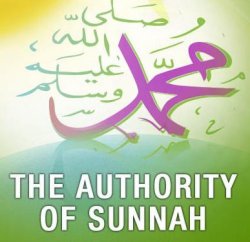Relationship of the Sunnah to the Quran — III
27/03/2010| IslamWeb
In the last article, we began discussing the second way the Sunnah is related to the Quran, which is: providing explanation and further information regarding the principles, rulings, stories and basics of Allah's Message established in the Quran—for example, details of how to perform the Prayer, Fasting, perform Hajj (Pilgrimage), etc. This is a concept scholars have called, `Clarifying Sunnah'. This part of the Sunnah forms the majority of its role and authority and that led many to think that is the only function and role the Sunnah has in relationship to the Quran. The discussion of the authority of the Sunnah presented in this series has provided enough evidence to refute this view.
The Sunnah explains, expounds and provides further details and information for any aspect of the Sharee’ah (Islamic Law) in four typical ways:
1. Bayaan Al-Mujmal: Also known as Tafseel al-Mujmal. Al-Mujmal is anything or any concept that is abridged, too broad or too brief that more information and details are needed to carry it out and act upon it. Al-Mujmal can also be described as non-detailed items, concepts, information or commands. For example, although the Quran commands its followers to make and establish salah, no where in the Quran can one find enough details about the way the Prayer should be established. The Sunnah therefore gives all the needed details, big and small, to do exactly that. And because of the fact that the non-detailed commands comprise most of Allah's message in the Quran, the Muslims turn to the Sunnah of the Prophet  to get the details without which they cannot carry out these commands.
to get the details without which they cannot carry out these commands.
Therefore, details like the Prayer timings, number of Rak'ahs (units), the various prerequisites and pillars of the Prayer, the correct posture, etc., were given by the Sunnah of the Messenger  . Also, the Sunnah provided information essential to the understanding of the aqeedah (creed) principles—a well known example of that would be the hadeeth of ‘Umar Ibn Al-Khattaab, may Allah be pleased with him, which expounds the three basic parts of faith, Islam, Iman and Ihsaan.
. Also, the Sunnah provided information essential to the understanding of the aqeedah (creed) principles—a well known example of that would be the hadeeth of ‘Umar Ibn Al-Khattaab, may Allah be pleased with him, which expounds the three basic parts of faith, Islam, Iman and Ihsaan.
The Clarifying-Sunnah's role is not limited to the tenets of faith or to the rites and acts of worship. The Sunnah provides all needed explanation, demonstration or further details for any aspect of Islam and to the level required. It is the opinion of most scholars that if it is not in the Quran and the Sunnah then it is not needed for the Muslim to live according to Sharee’ah. This is a key element in understanding the authority of the Sunnah because some may think that for Muslims to lead an Islamic life, the Quran and the Sunnah must give every detail for all matters in this life. This is not only cumbersome to provide and impossible for man to manage and comprehend, but it is not necessary. Instead, stated briefly, the Quran and the Sunnah provide timeless principles that Muslims can use as bases for deriving and developing rulings they need at anytime.
By providing essential details, the Sunnah often clears up confusion regarding what is either missing from or what may not be immediately known from the text of the Quran alone. A good example for this is the elaboration on the stories of the Quran such like the one about the "People of the Pit" mentioned in the first five verses in the chapter of Al-Burooj (85) and the one about the ‘People of the Cave,' in the chapter of Al-Kahf (18). And even though the Quran dealt with the story of Moosaa (Moses), may Allah exalt his mention, and his people in 28 out of its 30 parts, still the Sunnah provided many important facts about it as well as principles and lessons to be learned from it.
www.islamweb.net

